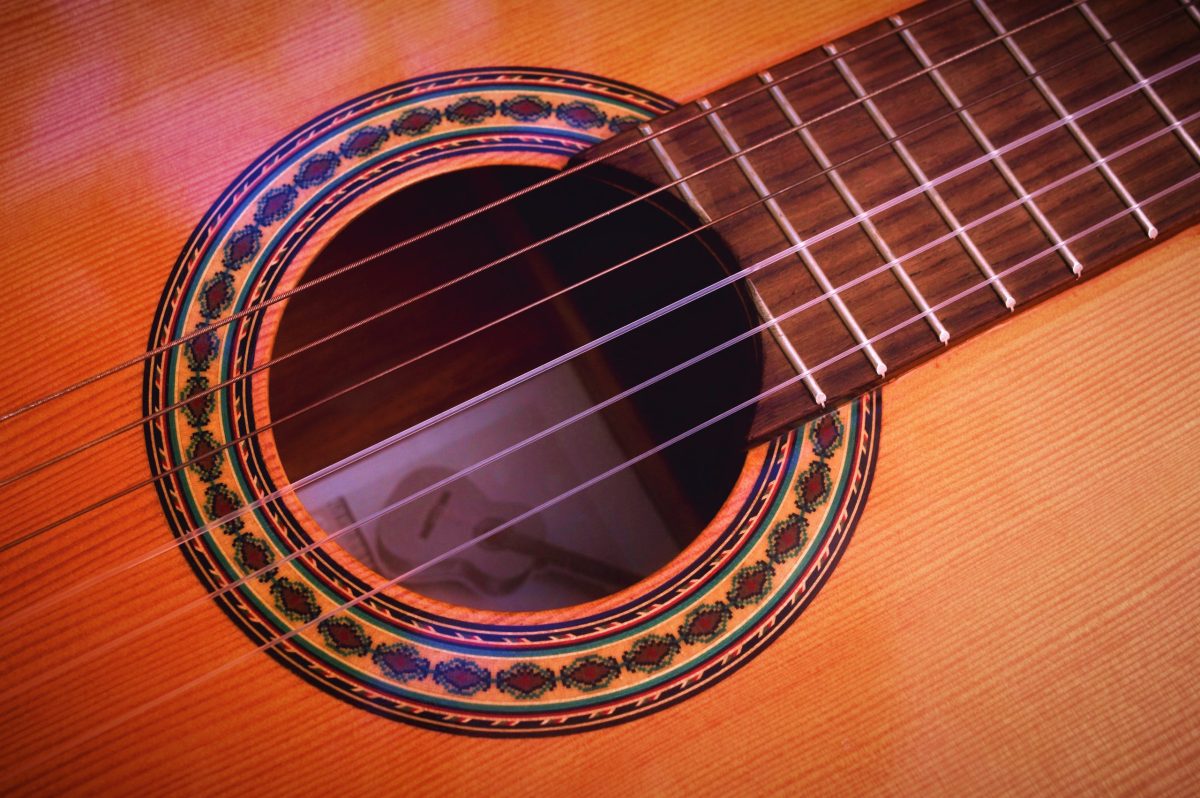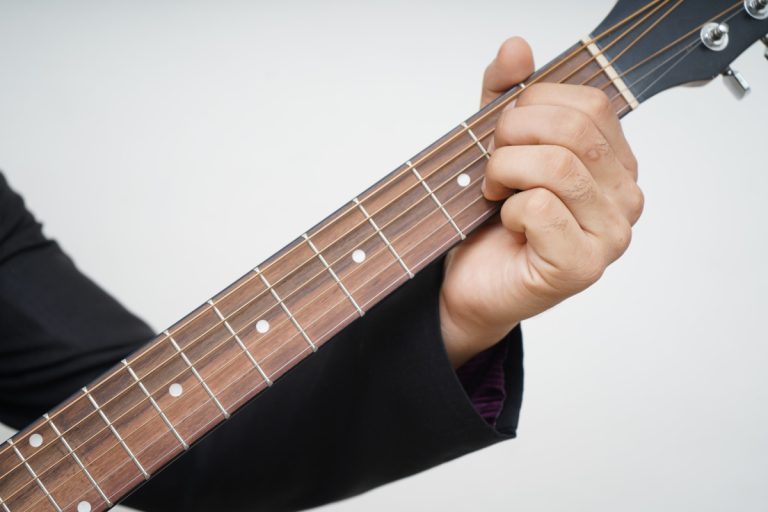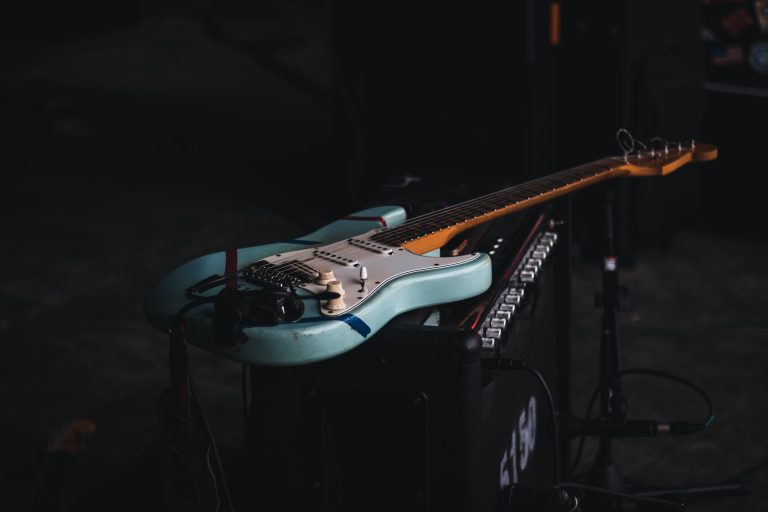Are you a guitarist wondering what strings to use? The two main types are acoustic and electric guitar strings. Each has its own unique construction, materials, tension, and tone.
In this article, we’ll dive into the differences between acoustic and electric guitar strings, how to care for them properly, what tools you need for maintenance, and whether it’s okay to interchange them.
We’ll also recommend the top 3 acoustic and electric guitar strings. Read on to learn everything you need to know before purchasing your next set of guitar strings.
Is It Okay to Interchange Guitar Strings?
It’s not recommended to interchange electric and acoustic guitar strings due to the significant tension difference. Use the wrong string, and you can damage the guitar’s neck, bridge, and soundboard.
However, if you want to try electric strings on an acoustic guitar to create a unique sound, you should use heavier gauge strings to compensate for the increased tension.
It’s also worth noting that steel strings are not the only strings used on acoustic guitars.
Acoustic Guitar Strings
Acoustic guitar strings come in different sizes and shapes, with varying types of materials, making them suitable for Concert, Grand Concert, Auditorium, Grand Auditorium, and Dreadnought. They’re made from steel or similarly durable and long-lasting materials.
These strings are usually thicker and larger, giving them a warmer and brighter sound that is perfect for playing in a large room or during a performance.
Acoustic guitar strings require a lighter touch and vibrate more due to their larger gauge and heavier build.
Construction and Materials
Acoustic guitar strings are made from various materials, such as bronze alloys, phosphor bronze, brass, or nickel bronze. These materials are chosen for their warm, bright, and clear sound.
In contrast, electric guitar strings are usually made of steel or nickel, which produces a more brilliant and sustained sound.
Additionally, classical guitar strings are typically made of nylon and bronze for the lower lines.
Tension and Gauge
Tension and gauge are essential factors to consider. Acoustic strings typically require higher tension than electric guitar strings and are typically measured in pounds per linear inch of pressure.
The standard factory string gauge for acoustic guitars is usually around 12, while electric guitars generally use .009 or .010-gauge strings.
However, acoustic string gauges can range from 9-gauge to 13-gauge to suit different playing styles and scale lengths. The tension and gauge of your guitar strings will greatly impact your playing experience, so choose the right strings to match your playing style and preferences.
Playing Style and Technique
In terms of playing technique, the most common approach is to use a pick, also known as a plectrum, to strike the strings. This produces a bright, percussive sound for strumming chords and playing lead lines.
Fingerstyle playing is often used in folk and classical music and can involve various techniques, such as fingerpicking, thumb picking, and hybrid picking.
Top 3 Acoustic Guitar Strings
Ernie Ball Aluminum Bronze Acoustic Guitar Strings
BEST-ALL ROUNDER ACOUSTIC GUITAR STRINGS
Perfect For: All levels of player
Features:
- Featuring maraging steel hex-core wire
- Wrap wire made from a blend of copper and aluminium
- Patented technology
Pros:
- Richer and fuller tone with powerful low-end response
- With brighter sounds
Cons: Can be too bright sounding at times
The TedScore: 8/10
D’Addario EJ17-3D Acoustic Guitar Strings
One of the Best Acoustic Guitar Strings on the Market
TedScore: 9.5/10
Best Option For: All acoustic guitar players
String Gauges: Medium – 0.13 to 0.56
Features: Durable phosphor bronze coated string, that keeps their well-balanced and warm tone for a long time
Pros
- Durable medium strings
- Corrosion-free
- High-quality strings
Cons
- The strings have a longer length, and you need to cut them after assembling
Elixir Strings 80/20 Nanoweb Coated Strings
Perfect Set of Strings for Players With Sweaty Hands
TedScore: 8/10
Best Option For: All styles of acoustic guitar players
String Gauges: Medium – 0.13-0.56
Features: Nanoweb-coated strings – clear treble sounds and last for a long time; phosphor bronze material
Pros
- A warm and vibrant tone
- Corrosion resistant
- Long-lasting
Cons
- A bit pricey
Electric Guitar Strings
These strings are designed to produce a louder, brighter sound that complements the guitar’s amplified tone.
Construction and Materials
Electric guitar strings are typically made from steel, nickel/steel alloy metal, pure nickel, or other ferromagnetic materials. These materials are important because they have magnetic properties, allowing them to transmit the string vibration to the guitar’s pickups.
The construction and materials of electric guitar strings can greatly affect the sound they produce. Manufacturers may also coat or plate the lines with materials that can impact the tone, such as nickel or titanium.
In contrast, acoustic strings are usually made of bronze, phosphor bronze, or nickel bronze.
Tension and Gauge
Electric guitar strings typically range from .008 (lightest) to .056 (heaviest) in gauge. Lighter gauge strings are easier to bend, while heavier gauge strings are better for low tunings and produce more volume and sustain.
The tension of the strings also plays a critical role in the sound and playability of electric guitar strings on an acoustic guitar.
The pickup of the strings on an electric guitar transforms string vibration into an electrical signal to render a specific note. Therefore, the gauge and tension of the strings can greatly affect the sound produced by the pickup.
Tone and Sound
Electric guitar strings are specifically designed to produce sound with the help of pickups. These pickups require magnetic vibrations in order to produce a sound that can be amplified. This means that the strings used need enough magnetism to interact with pickups.
Playing Style and Technique
One of the most popular techniques is palm muting. This involves muting the strings at the bridge with your right palm while strumming a chord or playing a note.
Another technique you may want to try is the string bending action, which involves pushing a string across or over the fingerboard with your left-hand fingers to change the pitch.
So, explore these different playing styles and techniques to find the perfect match for you and your electric guitar.
Top 3 Electric Guitar Strings
1. ERNIE BALL 2233 SUPER SLINKY
PERFECT SET OF STRINGS FOR STUDIO RECORDING
BEST OPTION FOR: Professionals And Beginners
STRING GAUGES: 0.09-0.42
FEATURES: These Nickel Steel Strings Offer A Warm And Resonant Tone Even When The Guitar Is Not Plugged Into An Amp
PROS
Clarity throughout the entire fretboard
Highly versatile
The nickel plated steel strings sound great without an amp
CONS
Not the best option for guitarists who like a dark tone
The TedScore™: 9/10
2. D’ADDARIO EXL 110-3D
THICKER STRINGS THAT CAN EASILY BE BENT AT HIGHER FRETS
BEST OPTION FOR: Guitarists Who Experiment With Drop Tunings
STRING GAUGES: 0.10-0.46
FEATURES: Thick Strings Perfect For Frequent Tuning Changes
PROS
Durable
Best for drop tunings
High-end performance
CONS
Some beginners find the thicker gauge uncomfortable
The TedScore™: 8.5/10
3. D’ADDARIO NYXL 1046
BEST STRINGS OFFERING TUNING STABILITY AND SNAPPING RESISTANCE
BEST OPTION FOR: Rhythm Guitar Players
STRING GAUGES: 0.10-0.46
FEATURES: High-Carbon nickel-plated steel strings; Resistant To Breaking; Offer Particularly Warm Sounds In The Middle Of The Fretboard
PROS
Great for power chords and chords
The strings preserve your finger stamina
Long lasting
CONS
Not the best option for solo players
The TedScore™: 9/10
How to Care for Your Guitar Strings
Caring for your guitar strings is essential to maintaining sound quality and prolonging their lifespan:
Step 1: Keep Your Hands Clean
Be sure to wash your hands before playing your guitar to remove dirt and natural oils that can cause corrosion and dead strings. Also, clean your fretboard regularly to prevent buildup and protect against dead strings.
Step 2: Wipe Your Strings
After each playing session, wipe your guitar strings with a soft microfiber cleaning cloth to remove moisture and grime.
Step 3: Use a String Cleaner
Investing in a good string cleaner can help prolong the life of your strings by removing buildup and preventing rust.
Step 4: Change Strings Often
Even with regular care, strings eventually wear out and lose their sound. Change your strings every few months to keep your sound fresh and bright.
Step 5: Store Your Guitar Properly
When not playing your guitar, store it in a proper case or stand to protect against damage and rust.
Tools for Your Guitar
When it comes to guitars, there are many tools and accessories available to enhance your playing experience. Mini guitar pedals are becoming increasingly popular and are a great addition to your kit. Electric guitars are easier to adjust with screws or hex keys on or near the bridge, whereas acoustic guitars require a more complicated setup.
Regardless of what type of guitar you play, changing guitar strings regularly is essential for keeping the sound quality top-notch.
Guitar String Winder/Cutter
This handy tool makes replacing strings on your guitar easier and faster, ensuring you can always have fresh lines ready.
When it comes to acoustic vs electric guitar strings, there are some notable differences. For example, G strings on acoustic guitars are usually all wound strings, whereas G strings are generally unwound on electric guitars.
When changing strings, it’s also important to check the nut and bridge saddle for binding and adjust the truss rod for correct tension.
The string winder we recommend is the D’Addario Pro-Winder:
D’Addario Guitar Pro-Winder String Winder/Cutter
THE ULTIMATE RESTRINGING TOOL
Perfect For: All guitars, banjos & mandolins
Features:
With integrated bridge pin puller for acoustic instruments
Designed for efficient and comfortable use
Comes with a built-in string cutter
Pros:
Specifically designed to cut bass or guitar strings
Can cut strings even at sizes above 3mm
Cons:
None!
The TedScore: 10/10
Summary – Acoustic vs Electric Guitar Strings
In conclusion, you really don’t want to interchange guitar strings between acoustic and electric guitars. They are made differently and for good reason.
If you want to see a good list of guitar strings, take a look at our list of 20 Best Guitar Strings here.
Good luck, and happy strumming!
FAQ’s
Are electric guitar and acoustic guitar strings the same?
Although the fretboards on electric and acoustic guitars are the same, their strings differ – meaning the notes and chords can vary. The strings used largely depend on the type of guitar being played. Electric guitars use steel or even nickel plated strings, whereas acoustic guitars use bronze or brass strings. Nylon strings are exclusive to classical guitars.
Can I use electric guitar strings on an acoustic?
Yes, using electric guitar strings on an acoustic guitar is possible, but it’s not recommended. The bronze coating used on acoustic guitar strings is a fundamental part of their sound, and electric guitar strings lack this bronze coating. This means that the electric guitar pickups will produce a different sound than usual. However, if you’re curious, you can always try it by experimenting with different types of strings. Steel strings are often used on nylon-string acoustic guitars, popular in classical music. But one thing to note is that electric guitar strings may only produce sound from the first and second strings as these have similarities to electric guitar strings.
What gauge strings for electric vs acoustic guitar?
Regarding guitar strings, the gauge (thickness) can greatly impact the tone and playability of the instrument. Acoustic guitars typically use thicker strings than electric guitars, with the most common gauge being 12 gauge. On the other hand, electric guitars generally use a lighter gauge, with the standard factory string gauge being about .009 or .010. However, there are many options for electric guitar strings, ranging from 8-gauge to 14-gauge. Common string sets for electric guitars are 9-gauge and 10-gauge, referred to as either ‘super light’, ‘light’, ‘medium’ or ‘heavy’.





